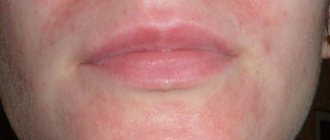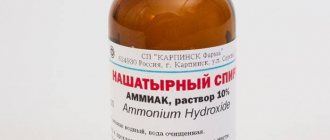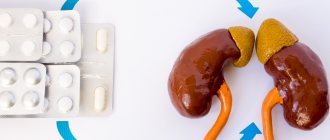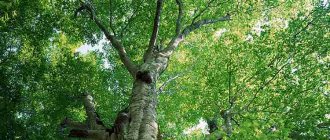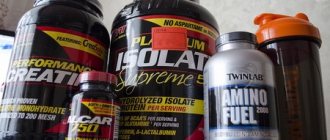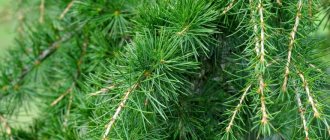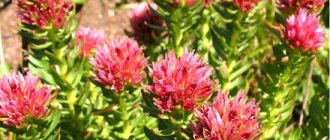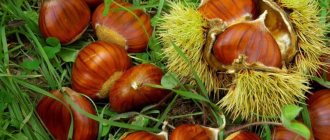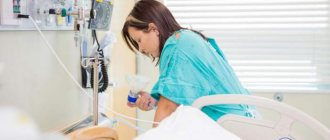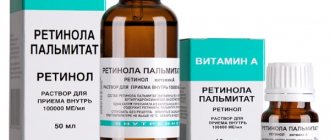Resorcinol is one of those substances whose use in cosmetology is surrounded by many legends. Its medicinal properties are quite interesting, but it is almost impossible to find facial skin preparations based on this compound on sale. The main reason is the very high risk of side effects. It would seem that after such a minor introduction, discussing resorcinol and its use in cosmetology is pointless, but since it is still sometimes found in pharmaceutical preparations, we decided to talk about it in detail.
Pharmacological properties of Resorcinol
The use of Resorcinol as a disinfectant must be carried out in low concentrations - 0.25-1.5%. The drug solution has an epithelializing and healing effect, and also stimulates tissue regeneration and eliminates the inflammatory process. The solution also acts as an astringent and antiseptic on areas of inflammation.
In cosmetology, Resorcinol is used as a product with exfoliating and cauterizing properties, acting as a scrub for deep cleansing of the skin.
According to pharmacology, Resorcinol is incompatible with hydrogen peroxide, camphor, menthol and alkaline substances.
Key Features
Resorcinol is colorless or whitish crystals, most often obtained artificially. The smell of the substance is noticeable, but it cannot be called repulsive. In addition to cosmetology, it is used in chemical production, medicine and laboratory practice.
Basic properties:
- international name - resorcinol,
- possible synonyms: 1,3-benzenediol, 3-hydroxyphenol, 1,3-dihydroxybenzene,
- chemical formula: C6H4(OH)2,
- molar mass – 110 g/mol,
- density – 1.27 g/cm3,
- melting point – 110°C, boiling point – 281°C,
- solubility in water – 140 g/100 ml,
- CAS registration number – 108-46-3,
- EINECS code – 203-585-2,
- Resorcinol has a composition similar to pyrocatechol and hydroquinone, but the hydroxyl groups in it are located differently, which is why their chemical properties are completely different.
Instructions for use of Resorcinol
According to the instructions, Resorcinol is used externally in the form of a 2% alcohol solution or 5-10% ointment. For acne, the drug is applied in a small amount at night with the addition of special resorcinol alcohol (alcohol is especially necessary for rosacea).
When Resorcinol is applied to uncleaned skin, it may become red or purple in color.
The drug has strong antiseptic properties, so its contact with mucous membranes, the digestive system and the respiratory tract is unacceptable. If Resorcinol gets into the eyes, it is necessary to rinse the mucous membranes with copious amounts of water, and in case of poisoning of the digestive organs, it is necessary to immediately perform a gastric lavage.
Resorcinol should not be used in combination with salicylic acid, magnesium oxide and sodium bicarbonate. The medicinal properties of the drug disappear when interacting with yellow mercury oxide, phenyl salicylate and antipyrine.
In accordance with the instructions, Resorcinol in the form of an ointment must be diluted in a solution of ethyl alcohol and water, and ethyl ether can also be added.
RESORCIN
RESORCIN
(
Resorcinum
; syn.
Resorcinolum
; GPC) - an antiseptic. m-Dioxybenzene; C6H6O2:
White or white with a slight yellowish tint crystalline powder with a weak characteristic odor. Under the influence of light and air it gradually turns pink. Very easily soluble in water and 95% alcohol, easily soluble in ether, soluble in glycerin and fatty oils, very slightly soluble in chloroform; t°melt 109-112°, mol. weight (mass) 110.11.
It is a strong reducing agent and has an antiseptic effect (see Antiseptics). At concentrations of 1-2% it exhibits a keratoplastic effect, and at concentrations of 5-15% it has a keratolytic effect (see Keratolytic, keratoplastic agents).
Used externally in the form of 2-5% aqueous and alcoholic solutions and 5-10-20% ointments for the treatment of skin diseases (psoriasis, lichen planus, seborrhea, dermatomycosis, hyperpigmentation, itchy skin); in addition, for the treatment of conjunctivitis (1% solution and 1-2% ointment) and otitis (1-2% solution). Resorcinol formalin mixture is used in dentistry; it is part of the liquid for impregnation and filling of dental canals.
R. is incompatible with alkalis. The drug is not recommended to be prescribed together with salts of heavy metals.
With accidental or intentional (for example, for the purpose of suicide) ingestion of R., acute poisoning occurs, which is manifested by abdominal pain, nausea, vomiting, diarrhea mixed with blood, dizziness, hypothermia, decreased breathing, tachycardia, signs of excitation of c. n. With. In severe cases, death is possible due to paralysis of vital centers of the brain.
Resorcinol in forensic medicine
. Morphol. signs of R. poisoning, identified during forensic medical examination. cadaver examination are nonspecific. Inflammatory changes in the mucous membrane of the gastrointestinal tract are noted. tract, pulmonary edema, sometimes combined with focal pneumonia, pinpoint hemorrhages in the substance of the brain and under the serous membranes of internal organs, fatty degeneration of parenchymal organs. In this regard, the conclusion about acute poisoning of R. as the cause of death is based mainly on data about the wedge, manifestations of poisoning (see above) and the results of forensic chemistry. research. At court-chem. In research, R. is extracted with alcohol (at pH 2.0–3.0) from crushed internal organs. After evaporation of the alcohol and precipitation of proteins and extractives, the residue is dissolved in water. R. is extracted from an aqueous solution with ether or chloroform. For the qualitative determination of R., color reactions are used: with ferric chloride (purple color), sodium hydroxide (red or pink color), or sodium nitroprusside in the presence of hydroxylamine hydrochloride in an alkaline medium (green color). Quantitative determination of R. is carried out photometrically, but it is only of relative importance, since R. quickly undergoes various transformations in the body.
Bibliography:
Stepanov A.V. Forensic chemistry, p. 220, M., 1951; Prasad M. R., Sugumaran M. a. Vaidyanathan S. S. A new colorimetric method for the estiuration of resor-cinol, Ann. Biochem., v. 80, p. 483, 1977.
L. D. Shipilova; A. F. Rubtsov (medical court).
Indications for use
Acne and neurodermatitis are indications for the use of Resorcinol
A patient who plans to use Resorcinol should be primarily interested in the instructions for the drug. It indicates the main indications for which treatment with this composition is appropriate and effective. Doctors and cosmetologists prescribe the use of the drug in various forms to eliminate the following pathological conditions:
- Seborrheic dermatitis.
- Skin itching.
- Acne.
- Neurodermatitis.
- Eczema.
- Skin fungus.
- Alopecia.
The resorcinol-formalin treatment method should be prescribed by a competent specialist. Using it for other purposes may result in serious skin damage.
Reviews
Reviews mainly concern the use of Resorcinol for acne vulgaris: 10-15% ointment, drying the stratum corneum, acts as an exfoliant and helps get rid of acne. It is noted that for acne, a good result is given by talkers - powder of the main substance, chloramphenicol, boric and salicylic acid, and a composition containing only resorcinol is ineffective, in addition, it can cause irritation and dryness of the skin. Resorcinol alcohol is used to cauterize individual rashes.
This substance, in combination with sulfur and salicylic acid, helps to cope with open and closed comedones.
Contraindications and restrictions
For burns, the drug Resorcinol is not used
Antiseptic belongs to the group of safe medicines. Therefore, its use is permitted for most patients who have such a need. Resorcinol manages to suppress the activity of pathogenic microflora in a short time.
However, such therapy will only be harmful to a person who cannot use the resorcinol-formalin method due to the following contraindications:
- burns, regardless of the nature of their occurrence,
- deep damage to the epidermis,
- individual intolerance to the active substance,
- renal or liver failure,
- childhood,
- carrying out hormonal therapy.
It is highly not recommended to use the drug for patients who have overly sensitive skin. She may react negatively to interaction with Resorcinol, which will only complicate the course of the disease.
What to buy?
In this section, we traditionally list the best, from our point of view, drugs containing a particular substance. But resorcinol is a special case. The properties of this compound are such that we cannot definitely recommend any cosmetic product for home use based on it. The only acceptable option is hair products.
- Color Naturals (Garnier, 110 ml / RUR 145). The composition of this cream paint is relatively safe, although toluene-2,5-diamine and ethanolamine are still present in it. The undoubted advantage of the substance is its lasting cosmetic effect and affordable price, so Color Naturals can be safely recommended for use: most customer reviews are favorable.
- Perfect Care Luxurious care (Palette, 110 ml / 165 RUR). Not a bad, although far from outstanding option. The composition of the paint is quite questionable, since in addition to resorcinol it contains hydrogen peroxide, toluene-2,5-diamine sulfate, ceteareth-20 and 4-chlororesorcinol. However, this is the norm for budget cosmetics, so Perfect Care is recommended to be used only occasionally.
- Eyebrow and eyelash dye (Nexxt, 50 ml / 340 RUR). A professional cosmetic product, the use of which requires preliminary preparation and careful adherence to the instructions. Among the beneficial ingredients, castor oil, ascorbic acid and carboxymethylcellulose can be noted, and among the harmful ones, HC Yellow (No. 5).
- Capixil Placenta Shock Lotion 3.4.4 (DSD De Luxe, 100 ml / RUR 3,700). Hair lotion is in a completely different class than products from Palette or Garnier. Its medicinal and cosmetic properties are diverse: stimulating hair growth, combating age-related changes, treating various skin diseases. Unfortunately, you will have to pay a lot for quality - this hair lotion is not cheap.
Composition and release form
Resorcinol is available in several forms
A drug with antiseptic properties is available in several forms. Under this name, powder for dilution, solution and ointment are presented in pharmacies. There is also a preparation in the form of a paste, which is also used in medical practice. The resorcinol-formalin therapy method involves the use of this composition.
Resorcinol, produced in powder form, has a crystalline form. It is characterized by a pronounced odor. This product can be easily dissolved in ethanol, water or oil.
The solution has a concentration of 1-5%. It is prepared on a water or alcohol basis. It goes on sale in 25 ml bottles made of dark glass.
The ointment contains from 5% to 20% of the active substance. It is packaged in tubes of 15 g.
The main active ingredient of Resorcinol is meta-dioxybenzene. If you study the composition of the drug in detail, you can find in it a number of auxiliary components that support its dosage form.
Instructions for Resorcinol (Method and dosage)
A solution of Resorcinol alcohol (in Latin Solutio Resorcini spirituosa) is applied externally to the affected areas of the skin using a cotton swab. The ointment is applied at night. The dosage regimen is individual and depends on the disease.
For red acne, use a 1% alcohol solution. For oily seborrhea , rub a 1–2% alcohol solution into the scalp. For the treatment of dermatitis and eczema, 1–2% solutions are used.
For vulgar acne, for the purpose of exfoliation - 10-15% ointment. For seborrheic eczema, this drug is used in combination with sulfur.
For local treatment of genital warts , a powder of a pure product is used as a chemical coagulant. The antiseptic properties determine the use of Resorcinol in medicine, as an independent remedy, but more often as part of other drugs. Thus, Resorcinol is included in rectal suppositories (in combination with zinc oxide, bismuth subnitrate and tannin ) and Fukortsin solution. It is part of Andriasyan ointment and Castellani liquid, which are used to treat mycoses and pyoderma .
To cleanse the skin, especially with signs of liquid seborrhea, water-alcohol talkers are used, which also contain salicylic and boric acids.
Lotions with a keratolytic effect are known, containing resorcinol, salicylic acid and allantoin . For hygiene of the scalp during dandruff and desquamation, Squafan S shampoo (France) has been developed, in which salicylic acid and resorcinol in high concentrations make it possible to remove persistent areas of desquamation.
Another use of resorcinol in medicine is resorcinol-formaldehyde paste, which is used by dentists to fill canals with incomplete pulp extirpation. The resorcinol-formalin treatment method was proposed in 1912 and was widely used in Soviet times - it turned out to be cheap.
Currently, it is rarely used and among professionals symbolizes poor quality treatment. The fact is that resorcinol-formalin paste is dangerous for the body due to toxicity. Cysts appear on the roots of the tooth, the gums atrophy, the tooth becomes fragile, and its color changes. Progressive dentists abandoned this treatment method more than 20 years ago.
Review from a cosmetologist
As is easy to see, resorcinol is present in both budget and top-end drugs, so I would not be so categorical in classifying it as a definitely harmful ingredient. But if you have a choice, give preference to those creams, lotions or tonics that do not contain this substance. Fortunately, the assortment in any pharmacy or specialty store contributes to this. If you nevertheless purchased such cosmetics, carefully study the accompanying instructions. This will minimize potential risk.
Side effects
Headache and dizziness indicate side effects
Resorcinol is highly toxic. For this reason, its use may lead to side effects. This phenomenon is due to the large amount of phenol contained in the drug. The attending physician must inform the patient about this; he is obliged to warn the patient about the possible development of negative reactions.
External use of the drug can lead to the following adverse reactions:
- burns,
- spasms,
- convulsions,
- headache,
- dizziness.
The development of allergic reactions and loss of consciousness as a result of poisoning with the active substance Resorcinol cannot be ruled out.
Use during pregnancy and lactation
If you are breastfeeding, you should avoid using Resorcinol.
According to most experts, women should not use antiseptics during pregnancy or breastfeeding. This is due to the fact that the drug has toxic properties. Its active substance in a certain amount can penetrate the human body and biological fluids. As a result, the likelihood of negative effects of the medication on the fetus or newborn child increases.
Overdose
An overdose of the drug may manifest itself as general weakness
The patient may experience an overdose of Resorcinol if he uses it in large doses. This condition is accompanied by severe weakness, difficulty breathing, tachycardia, headaches and fainting. In case of overdose, seek medical help immediately.
